Fogo Island, Newfoundland 作者: 来源: 发布时间:2021-12-02
I.Population and Area
-Population, 2016: 2,244
-Land area in square kilometres: 237.65
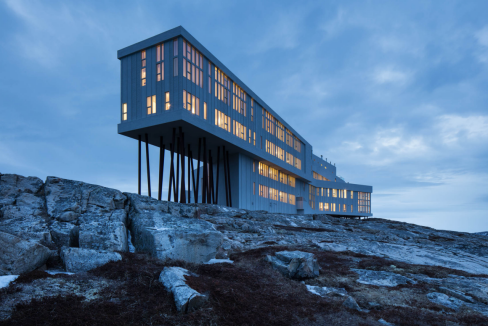
II.Natural Geography (environment and resources)
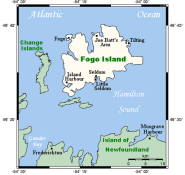
-Fogo Island is the largest of the offshore islands of Newfoundland and Labrador, Canada. It lies off the northeast coast of Newfoundland, northwest of Musgrave Harbour across Hamilton Sound, just east of the Change Islands. The island is about 25 kilometres (16 mi) long and 14 kilometres (8.7 mi) wide. The total area is 237.71 km2 (91.78 sq mi).
-The island had a population of 2,706 people in the 2006 census, 2,395 in the 2011 census, and 2,244 in the 2016 census.
-Though migratory French fishermen visited Fogo Island from the early 16th century until 1718, the first permanent settlement of the island took place in the 18th century. Fogo Harbour and Tilting Harbour were the first settlements on the island. The English and Irish descendants of the first inhabitants retained traces of their Elizabethan English and Old Irish dialects which can be heard on the island today. The island has many ancient folk customs brought from England and Ireland that are now disappearing.
-Fogo Island has a marine-based cold humid continental climate bordering on subarctic with cooler summers than inland areas of Newfoundland as well as milder winters than areas on the same parallels in interior Canada. However, due to the very cool characteristics of summer months, Fogo Island in many ways resembles the subarctic range. The fourth warmest month of June just straddles 10 °C (50 °F) in mean temperature. As typical of Newfoundland and its surroundings precipitation is high and consistent year-round, which results in more three and a half metres of snowfall on average in winter. Due to the extreme seasonal lag autumn is much warmer than spring, and as such the coldest and warmest months are February and August, respectively.
III.ECONOMY
-Median total income of households in 2015 ($): 59,200

IV.Industrial Characteristics
-The island attracts a wide range of visitors interested in its history, local wildlife and other attractions. It also has seven hiking trails such as Lion's Den, Brimstone Head, Turpin's and Joe Batt's Point Trail, as well as a ten Town owned local museums and heritage properties. These include the Marine Interpretation Centre, the Lane House Museum, and the Bleak House Museum. There are also museums ran by local people including Mona's Quilts & Jams and the Museum of the Flat Earth.
-Fogo Island Arts (launched in 2008) provides a platform for contemporary art on the island, via a series of residencies hosted at different studios around Fogo.
V.Attractions
1.Marconi Wireless Interpretation Centre
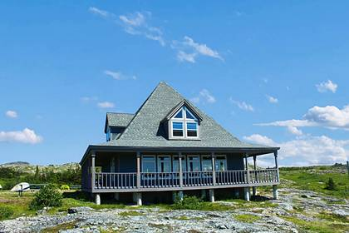
-Pickett's Road Extension, Fogo
49° 43' 10.47" N 54° 15' 47.06" W
-Perched high on the hill above the community of Fogo, get a great view of the community and learn about the early communications history of Fogo Island.
-Built in 1911 at the instigation of the Newfoundland government, the Marconi wireless station on Fogo Island was for many years the only one along the hundreds of kilometres of Newfoundland coast between Cape Race and Belle Isle. Built near the community of Fogo, it operated for 22 years and connected to an overland telegraph line, provided an invaluable communications link to local and passing mariners, and those bound to and from the Labrador fishery. It was also the main link to the Battle Harbour wireless station – through it the people of the Labrador Straits were linked to the North American "land line" telegraph network.
-Today, behind the town of Fogo, the Marconi wireless station site is on a sightseeing path to the abandoned village of Lion's Den. Through interpretive panels, it tells the story of the ebb and flow of communities and cultures, and the important role wireless technology once played in keeping those in the fishery safe, prosperous and in touch.
-Contact Information. +1 (709) 266 1320
2.Bleak House
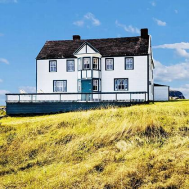
-North Shore Road, Fogo
49° 43' 04.91" N 54°17' 06.07" W
-Home to some of the most powerful and influential people in the history of Fogo, Bleak House represents the differences between the merchant class and the fishing class in the community from a century ago.The exact date that Bleak House was built is unknown, but it is suspected that the dwelling was built around 1816 for local merchant John Slade. The Slade family first became involved in the northern fishery around the middle of the eighteenth century. By the end of the century, they were the most powerful merchants in the Fogo Island fish trade, and their influence stretched into surrounding Notre Dame Bay.
-Sometime around the middle of the nineteenth century, John Owens, formerly Slade's bookkeeper, took over the house and the business. Owens managed to become wealthy after entering into an advantageous marriage. He operated a successful business on Fogo Island until he retired to England in 1897, when his house and businesses were bought by his partner, Henry Earle.
-The Earle family members were also influential merchants in the Fogo Island area. Running Earle Sons and Company Ltd., they operated a successful export and import business whose influence spread to other areas around Notre Dame and Bonavista Bays. In 1967 the family business was forced to close following the collapse of the Labrador fishery and the depletion of the Northern Cod stocks, and the Earles left the house.
-The Slades, Owens and Earles were among the most powerful and influential families in the history of Fogo, and the house reflects this. The house's name is said to be a reference to the 1853 Charles Dickens novel of the same name. Originally Bleak House was a rectangular, two-storeyed, centre-hall dwelling with a salt-box roof. Many of the features of the interior and exterior of the house were reflections of prevailing architectural designs of West County England. During the late 1800s additions were made to the house, especially in the rear.
-The location, appearance and size of the house indicate the importance of the families who lived there. Located on top of a hill, it overlooks the harbour and the rest of the community. It is located next to the business premises that used to be the heart of the Earle's commercial enterprises.
-In 1983 the house was made a gift to the Town Council of Fogo. It was already beginning to fall into disrepair after being abandoned for so many years. The town received funding to restore the house and transform it into a museum. It was made a Registered Heritage Structure in December 1985 by the Heritage Foundation of Newfoundland and Labrador, and became the first building in the province to be restored through the foundation's restoration program. The Bleak House Museum has been open to the general public since 1988, and remains one of the best examples of successful, long-term adaptive reuse.
-Contact Information: 01964 630383
-info@bleakhouse.org
3.Experience Fogo Site
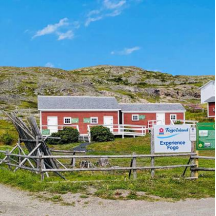
-North Shore Road, Fogo
49° 43" 00.47" N 54° 17' 22.04" W
-View collections of old tools and see how residents grew their own vegetables, raised their livestock, mended their nets, and dried their fish.
-This parcel of land was once owned by the Slade merchant family, and then by the Earle's. It was later donated by merchant Henry Earle for the building of a cottage hospital, which closed in 2004 after fifty-one years in operation.
-The site includes a number of elements – carpenter's shop, stable, traditional garden, stage and flakes – which would have been familiar in outport Newfoundland around a century ago.
-The community of Fogo was permanently settled by Europeans, and a description of its fishery was recorded as early as 1697. These early fishers probably left for Britain in the Winters, but permanent settlers were living at Fogo by the 1720's (Winter population in 1738 – 143)
-As the nearby stage and flakes remind us, Fogo existed because of the fishery. By the late 19th century the port was an important centre for cod harvesting: in 1891 twenty-five schooners sailed from Fogo to the Labrador fishery. A number of fish merchant houses were based at Fogo, including the Slades, Hodges and Earles. The residents of Fogo came mainly from West Country England and southeastern Ireland, with the number of residents standing at 1,118 in 1901. By this time Fogo was the unofficial capital of its district, with services like a blacksmith, coopers, a courthouse, police detachment and a resident doctor.
-Contact Information. +1 (709) 266 1320
4.United Church
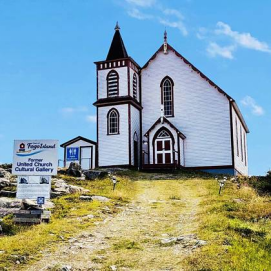
-Main Street, Fogo
49° 42' 52.79" N 54° 16"52.41" W
-A devastating fire destroyed the first Fogo Methodist Mission's church and much of Fogo Island in 1875. Within two years, Fogo's small Methodist community of approximately 140 people rebuilt the church. Its austere appearance shows the modest temperament of the people who donated their efforts and talents into rebuilding their place of worship.
-Since 1925 the church has been part of the United Church of Canada. In 1948 a bell tower was added. The structure is vacant, as one central United Church has been built for all the United Church residents of Fogo Island. It is now used as an Art Gallery for the summer months and has a display of artifacts from the Society of United Fishermen.
-The Heritage Foundation of Newfoundland and Labrador declared Fogo United Church a Registered Heritage Structure in May 1997.
-Location: 3250 Bloor Street West
5.Fogo Battery
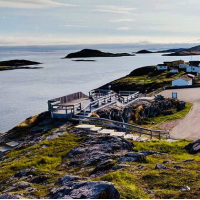
-The Fogo Battery was used to protect Fogo in the 1700's. Located on site are six cannons, a hiking trail, and an observation platform in which visitors can take advantage of the scenic views of the ocean and surrounding islands.
-Take a hike to the top of Fogo Head - 338ft above sea level - and enjoy the views of whales, birds, and icebergs.
6.Old School House
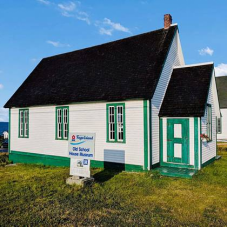
-The Old Schoolhouse is a rectangular, single-storey former school building with symmetrically placed wooden windows along the sides, a steeply pitched gable roof, and a front gable-end entry porch with wooden doors. It is located next to Our Lady of the Snows Roman Catholic Church on Main Street in Fogo. The building currently functions as a museum. The municipal heritage designation is confined to the footprint of the building.
-The Old Schoolhouse has historic and aesthetic significance.
-The Old Schoolhouse has historic value due to its age, its historical function, and its association with Fogo's Roman Catholic Congregation, which operated the school from 1888 to 1969.
-The Old Schoolhouse has aesthetic value as a good example of a nineteenth century school building in Newfoundland. The simple, rectangular, single-storey form and overall symmetrical design produces a tidy appearance which is historically typical of one room schoolhouses in the province. The influence of Gothic Revival architecture is seen in the steeply pitched rooflines of both the body of the building and the small porch centred in the front gable end and the long, regularly placed, multi-paned windows. The porch has a panel-style wooden door at each side, purportedly so that girls and boys would enter the school separately at their delegated side. The brick chimney at the front gable end harks back to the time when such school buildings were heated by woodstoves.
-The Old Schoolhouse has aesthetic value amongst a cluster of historic ecclesiastical properties visible along Fogo's Main street, including St. Andrew's Anglican Church and Cemetery, Fogo United Church and Our Lady of the Snows Roman Catholic Church. The schoolhouse's close proximity to the latter church, along with common elements of the two buildings (steep roof, rectangular building design with short façade, white and green colour scheme), clearly implies an historic connection between the two nineteenth century Catholic buildings at the centre of Fogo's cultural landscape.
-Address: Silver St, Fogo, NL A0G, Canada
VI.History
-Fogo Island is one of the oldest named features on the coast of Newfoundland. The Bertius map from 1606 shows Fogo Island as one of only about a dozen important features around the coast of Newfoundland. On French maps of the 16th to 18th centuries, the island is referred to as Ile des Fougues. The island was likely named by Portuguese explorers and early fishing crews in the 16th century (Fogo means Fire in Portuguese).
-Until 1783 Fogo Island was on an area of the coast called the French Shore. Though English and Irish were not supposed to settle here, under the terms of the Treaty of Utrecht, they did settle, and by 1750 Fogo was a thriving part of the British mercantile system of fisheries, based out of West Country English towns such as Poole, in Dorset.
-Tilting Harbour on Fogo Island is a National Cultural Landscape District of Canada and is Newfoundland and Labrador's first Provincial Heritage District. Tilting is unique for its Irish culture and, some people say, its Irish dialect. The Irish Cemetery in Tilting may be the oldest in North America.
-Local oral history indicates that Tilting was originally a French harbour before becoming a venue of Irish settlement. This is highly likely, given the traditional commercial and cultural links between southern Irish and northern French fishing ports. The first Irish settled in Tilting in the 1750s, and uniquely for Newfoundland, Tilting evolved into an exclusively Irish and Catholic town by the 1780s.
-Beothuk traversed Fogo Island for many hundreds of years before Irish and English settlers arrived. The Beothuk pursued the seal and salmon fisheries in the area. They also travelled out to the Funk Islands to collect feathers and eggs from the birds there. In the early years of European settlement at Fogo, there were incidents of violence between the Beothuk and the Europeans. This contact ended around the year 1800. The Beothuk became extinct as a people in the late 1820s.
-Fogo Island first attracted Europeans because of the extensive opportunities for commodity harvesting, including seal skins and oil, lumber, fur-bearing animals, salmon and of course cod. Over time, settlers on the island concentrated on processing dried cod, mainly because that was the product that most interested the merchants who dealt in the region of Fogo. From about 1850 until the widespread depletion of fish stocks in the 1990s, cod was king. In recent years the economy of the island has seen diversification away from solely fishing to tourism and cultural industries.
-Fishing has always been a hard life. Before Confederation with Canada, the mercantile classes of St John's, Newfoundland became rich by holding a near-monopoly stranglehold on both the supply of goods to the Newfoundland outports and on the sale of fish from them.
-In the early 20th century, the Fisherman's Protective Union was formed in an attempt to break this stranglehold. It was a form of co-operative with general stores owned by fishermen for fishermen. One of the Fishermen's Union stores still stands at Seldom-Come-By on Fogo Island, now open as a museum complete with general store, port installations, fishing implements and equipment for the manufacture of cod-liver oil.
-Today the Fogo Island Cooperative continues to successfully stake footholds in new fish markets. Communities began recognising the appeal of their land and heritage as cultural tourism opportunities.
-Crab and lobster fisheries have largely replaced the cod fishery; a fish-packing plant remains in operation in the town of Fogo.
-A Marconi radio transmitting station was once operational atop a hill near the town of Fogo; operating with a spark-gap transmitter to establish maritime communications, the station was forced to close around the time that radio became common for household use as the spark-gap design generated unacceptable levels of radio interference. Efforts to rebuild this station as a historic site commenced in 2002.
-In 1967, the island played a key role in the development of what came to be known as the "Fogo Process," a model for community media as a tool for addressing community concerns, when an Extension field worker from Memorial University, Fred Earle, and Colin Low shot 27 films with Fogo Islanders as part of the National Film Board of Canada's Challenge for Change program.
-Residents defeated the Smallwood Government's plans to resettle Fogo Island in the 1950s but by 1967 a downturn in the inshore fishery had forced many to turn to welfare support. The northern cod fishery closed in 1992. While the island did recover from the downturn—in part owing to the Fogo Process—the depleted state of the fishery adversely affected islanders for years to come.
VII.Other information
-The community of Fogo in Fogo Island is home to the Brimstone Head Folk Festival, hosted by the Fogo Island Folk Alliance. This event attracts people from all over every year in early August. Performers consist of many bands which have included The Masterless Men, The Irish Descendants, Middle Tickle, The Fogo Island Accordion Group, Shores of Newfoundland, The Affections and many other local performers such as Aaron Brown, Sally Payne and Jason Hoven.
-Brimstone Head was touted as one of the four corners of the world by the tongue-in-cheek Flat Earth Society of Canada[7] (not related to the Flat Earth Society).
-Along with the Brimstone Head Folk Festival, other communities have festivals as well. Joe Batt's Arm hosts the Ethridge's Point Seaside Fest, which usually takes place during the first weekend in August, the weekend before the Brimstone Head festival.
VIII.Contact information
-Government:
•Mayor: Andrew Shea
-The Town Office physical address:
6 Centre Island Road South
Highway 333
Fogo Island Central
-Hours of Operation:
Monday through Friday from 8:00 A.M. to 12:00 P.M. and 1:00 P.M. to 4:00 P.M., excluding holidays.
-Mailing address:
Site 5 Unit 2 Box 2
Fogo Island Central, NL A0G 2X0
-Telephone numbers are:
(709) 266-1320; Fax (709) 266-1323
-Email: info@townoffogoisland.ca
-After hours emergency number: (709) 266-7026
